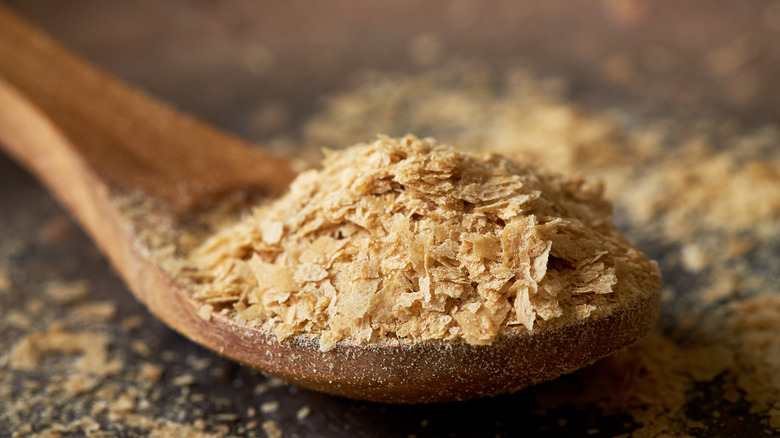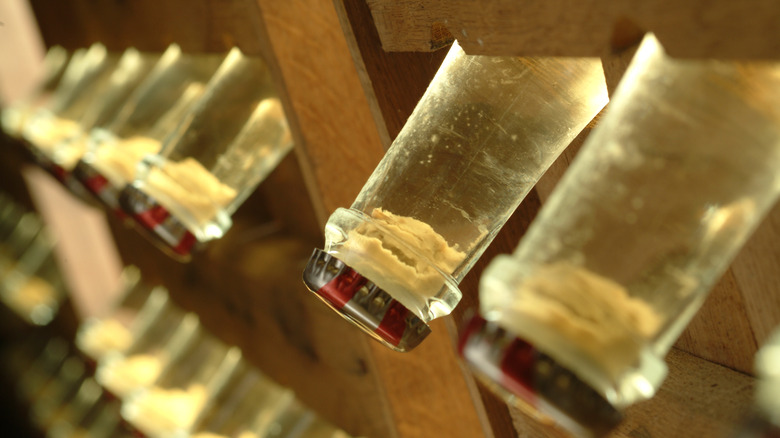Why Distillers Use Champagne Yeast To Make Spirits
Despite its name, champagne yeast can be used for a lot more than making bubbly. In fact, there are a small number of distillers using champagne yeast to make their tequila, because of the way the yeast is able to impact the taste of an otherwise traditional spirit.
The first step in making any kind of liquor involves fermentation, in which yeast transforms sugar into alcohol, transforming a base of grain or potatoes or agave into something entirely different. Traditionally, brewer's yeast is used, and in the case of tequila, the most common strain is one called saccharomyces cerevisiae. The type of yeast used can affect the flavor of a spirit, bringing out certain notes or overpowering others.
As you might guess, champagne yeast is primarily used for, well, champagne. But as Lalo González, the co-founder of LALO Tequila, told Tasting Table, "We use champagne yeast strain to highlight the balance and fruity flavor profiles of the highland agave ... The champagne yeast we use gives LALO its staple flavor, and any slight change in this yeast would change the flavor of the final product. We also use open air fermentation tanks, which allows native yeast to work alongside our Champagne yeast."
This combination of yeasts allows distillers to produce singularly flavored products.
Different yeasts affect different spirits
"Different yeast strands are used to work with specific kinds of sugars," González explains. "Working with grape sugars is much different than working with agave sugars." Temperature and aging also play a big role in the final product, as yeast is sensitive and reactive to different levels of stimulus, and can be modified to create certain flavors. González suggests that choosing a yeast "comes down to it being a personal preference" noting that it's all part of "the art of balancing flavors during distillation, as there are many different strains across the tequila industry."
As with other microorganisms involved in fermentation, yeast strains used by distillers can be created again and again over the course of many years from a "mother." Some yeasts are homegrown, others are purchased, and many are naturally occurring in different foods. The Mexican drink Tepache, for example, doesn't require added yeast because there is wild yeast on the pineapple skins it is made from. But even if you use the same strain of yeast, depending on what you are fermenting, it won't necessarily produce the same flavor as it would for a beverage with a different base. Wine made with whiskey yeast will taste very different from wine made with wine yeast, but it sure won't taste like whiskey.

